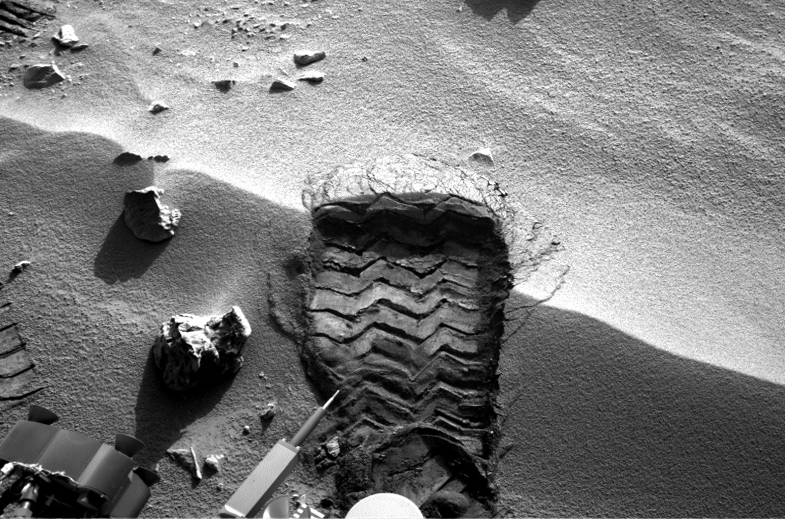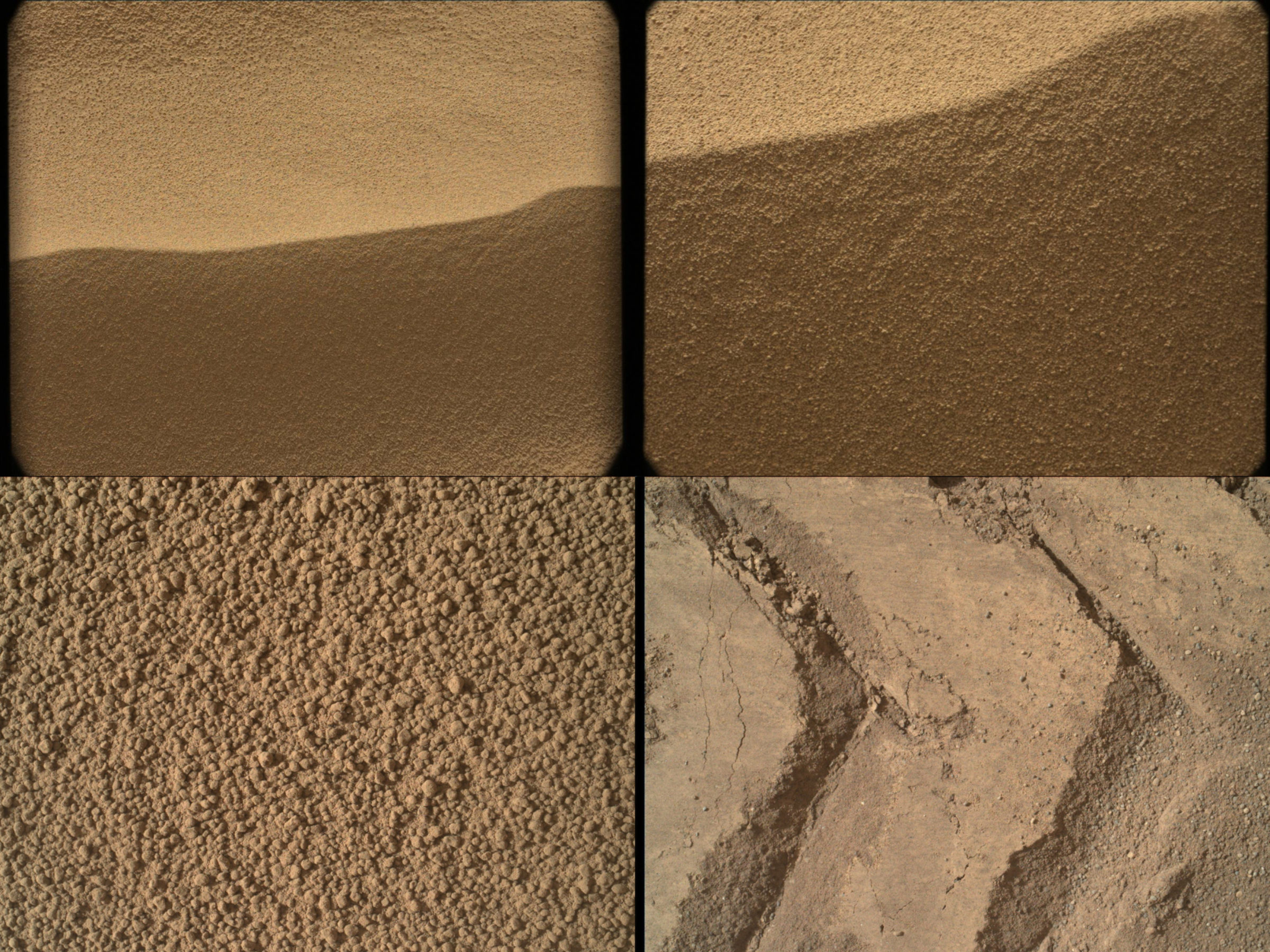Emily Lakdawalla • Oct 04, 2012
Curiosity Update, sol 57: Digging in at Rocknest
JPL held a press briefing today to fill the public in on what the rover's been up to in the last week, and what to look forward to over the next couple of weeks. Curiosity is wrapping up sol 58, but hasn't returned that data to earth yet, so this blog covers events through sol 57. Just minutes after I first posted this, images from sol 58 started arriving on Earth.
Curiosity is now parked near the sand drift I showed at the end of my last update. The drift has a name: "Rocknest."

On the briefing today, mission manager Mike Watkins said that the engineers had requested that Curiosity be driven to a "nice sandbox" to play in for the first soil sample, and it appears that Rocknest satisfies that requirement. Here are the broad outlines of what to expect during the next couple of weeks of activity:
- Characterize the soil at Rocknest to make sure it's appropriate for the first soil sample. It must mostly be pretty fine-grained material.
- On sol 57, they scuffed the soil to check what it looks like underneath the surface. A "scuff" is an activity that Spirit and Opportunity have done many times: drive on to a soil target, lock five of the six wheels, and rotate the sixth slowly. The activity is a lot like scuffing the sand with your hiking boot -- it's a way to scrape off the top surface to see what's underneath.

- Tosol they examined the scuff with MAHLI and APXS.


- Next they'll drive a meter or so to a site that will present undisturbed material for scooping.
- The first sample will likely be grabbed on sol 61 (which is Sunday; California and Curiosity daytime is close to being in alignment right now), but that could change. They'll scoop a sample and, with the scoop open, vibrate the scoop, filming the activity with Mastcam video. This will check to see if the sample is mostly fine (which would be good) or if it contains a lot of gravel (bad).
- If the sample is good, they'll close the scoop and commence a process to "clean" the interior of the sampling handling system of an "unavoidable oily residue" of Earth material inside the sample handling system. It may look squeaky clean but there is a tiny sheen of Earth remaining. Sandblasting the interior by shaking a sample of fine Mars sand inside it for 2-3 hours (15-20 minutes each on several different surfaces that can be vibrated) is a "super effective" way to clean out the system of any remaining Earthly organics.
- They will repeat this operation two more times. Dan Limonadi described this as "rinsing and spitting."
- Finally, the fourth sample to be picked up will be the one to be portioned and delivered to SAM and Chemin. They'll do a practice delivery first to watch how the sample behaves in the wind before actually trying the real delivery.
- Meanwhile, SAM and Chemin have to do their own internal preparations to receive their first solid samples.
- This whole process should take 2 to 3 weeks, finishing sometime in the sol mid-70s.
- Next, they will pick their way down a slope across into the bright, high-thermal-inertia unit.
- That's where they'll do their first drilling operation. The drill will also have to go through a cleaning process before it can deliver its first samples to SAM and Chemin. That should happen sometime in the sol-90s.
There is a lot of work to be done, but it's work that'll be done while Curiosity is mostly parked. I asked if there were plans to take a big image mosaic from Rocknest, and the answer was yes. Hooray! There are also three videos planned -- three of the shaking of the three scooped soil samples, and two of sample deliveries.


 Explore Worlds
Explore Worlds Find Life
Find Life Defend Earth
Defend Earth

